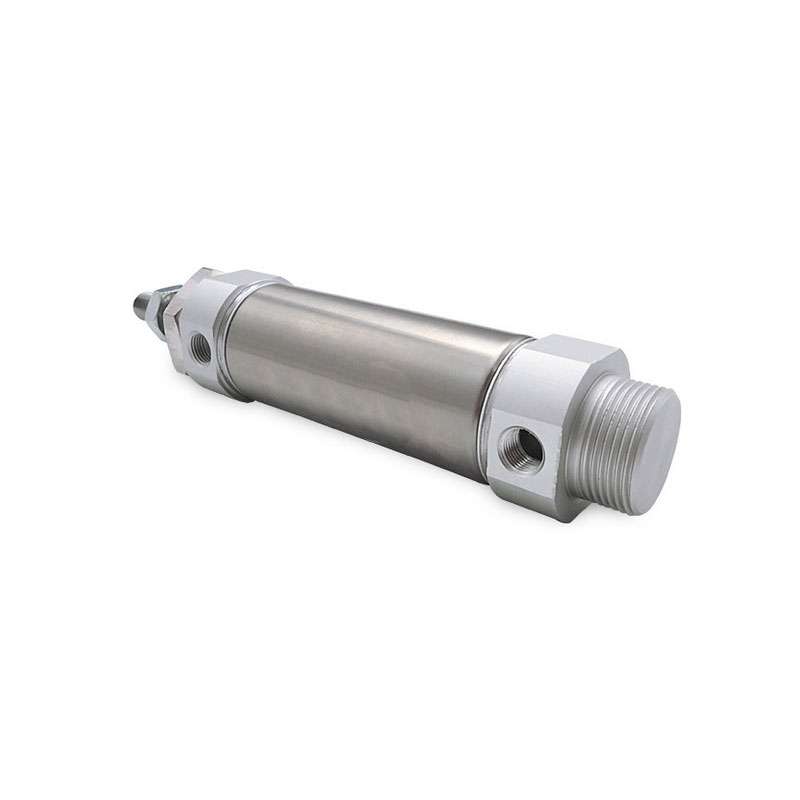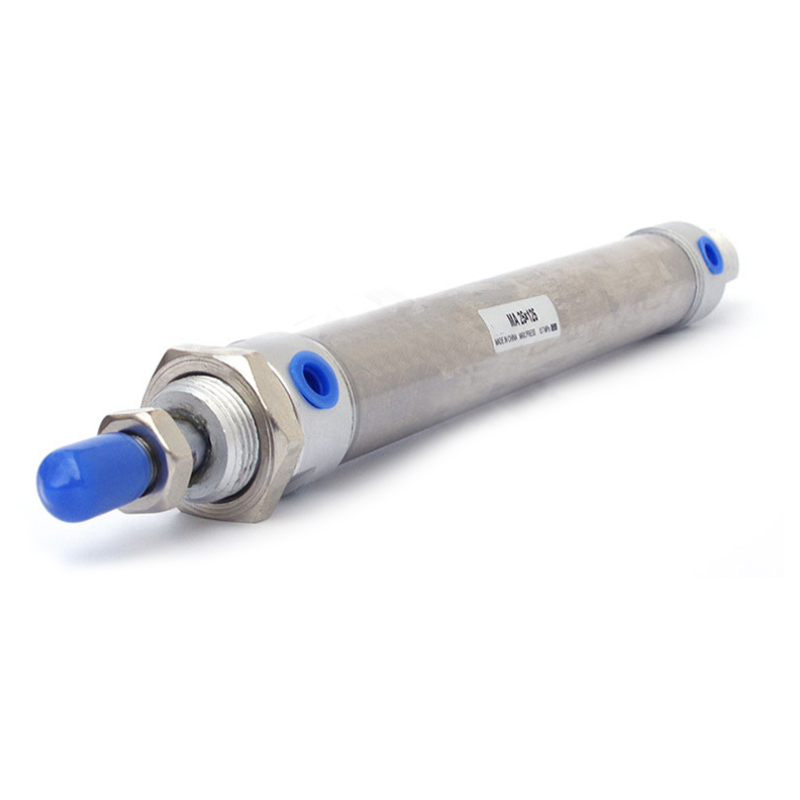Overview for CM2 Mini Cylinder
CM2 Mini Cylinder piston adopts a combined sealing ring to realize two-way sealing, and the piston and the piston rod are riveted together without using a nut. The end cover is equipped with an intake and exhaust port, and some also have a buffer mechanism in the end cover. A seal ring and a dust seal are provided on the rod side end cover to prevent air leakage from the piston rod and prevent external dust from entering the Mini Pneumatic Cylinder. A guide sleeve is arranged on the rod side end cover to improve the guiding precision of the cylinder, to bear a small amount of lateral load on the piston rod, to reduce the amount of downward bending when the piston rod is extended, and to prolong the service life of the CM2 Pneumatic Cylinder. Guide sleeves usually uses sintered oil alloy and anteversion copper castings. End covers used malleable cast iron in the past. Nowadays, in order to reduce weight and prevent rust, aluminum alloy die-casting is often used, and some micro cylinders are made of brass. The CM2 Pneumatic Cylinder is compact, lightweight, and the cylinder is resistant to external shocks. The CM2 Pneumatic Cylinder achieves a life of 1.5 times or more compared to the CM cylinder.
Technical Parameters for CM2 Pneumatic Cylinder
Bore: 20, 25, 32, 40mm
Stroke length: 300mm
Operating pressure: 0.7MPa
Piston speed: 50~750mm/s
Ambient and fluid temperature: -10~+70°C


















